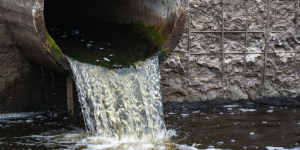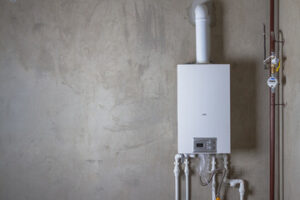Liquid Waste Disposal Perth methods like incineration, land application and deep-well injection can help businesses meet regulations and reduce environmental harm. The key is to choose a disposal partner that has specialized expertise in liquid waste management.
Various factors can influence the cost of liquid waste disposal, including volume, location and frequency of service. It is also important to consider any fees associated with Occupational Safety and Health Administration regulations.

The treatment of liquid waste is an important part of the disposal process, and there are several different ways it can be done. Some of the most common methods are chemical, biological and filtration treatment. These treatments can help to remove harmful substances from the waste and make it safe for release into the environment.
When liquid waste is disposed of improperly, it can have serious consequences. For example, it can contaminate water sources that people drink from. It can also harm animals and plants. In addition, it can create health risks for people by exposing them to chemicals and heavy metals. Proper disposal of liquid waste is essential for protecting the environment, human health and businesses.
Liquid waste can come from a variety of sources, including households, industrial facilities and agricultural activities. It can be classified as non-hazardous, hazardous or contaminated waste. Non-hazardous liquid waste includes household wastes such as wastewater, sewage and washing water. Hazardous liquid waste includes chemical spills and industrial byproducts. Contaminated waste includes sludge, corrosive materials and flammable substances.
Depending on the type of liquid waste, it may need to be treated before it can be safely released into the environment. For example, sewage waste must be treated to remove organic matter, pathogens and other contaminants. It can be treated using various methods, such as oxidation, biological oxidation and anaerobic digestion.
The resulting treatment water can be reused for other purposes or discharged into sewer systems. This reduces the need for freshwater resources and protects the environment. Other treatment options include incineration and deep-well injection.
Companies that generate large amounts of liquid waste can benefit from having a dedicated liquid waste management system. This can help to improve workplace safety and ensure compliance with environmental regulations. It can also reduce energy-intensive treatment procedures and disposal costs. Enhanced employee safety also increases morale and productivity. Companies can also save money by avoiding expensive fines and penalties for non-compliance.
Disposal
Whether it’s household waste or industrial effluent, liquid waste can be dangerous to the environment. It must be carefully contained, transported and disposed of to prevent environmental contamination, which can harm plant life, animals and humans. Proper disposal practices are a must to ensure regulatory compliance, minimize risk and avoid fines.
The first step in disposal of liquid waste is to determine the type of waste. Then, it can be classified based on its level of danger. Non-hazardous liquid waste is biodegradable, but hazardous waste may contain toxic chemicals or corrosive substances that require special disposal methods. Depending on the classification, the liquid waste might be sent to a sewage treatment plant or it could be recycled through a wastewater processing center.
While ensuring safety and compliance are primary goals of waste management, the system must also be cost-effective. A good way to minimize costs is by implementing an integrated waste management program that incorporates waste prevention, recycling and reuse, and disposal strategies.
Another way to reduce costs is by partnering with a waste management company that offers liquid waste services at competitive rates. A professional waste management company will work with you to understand your specific needs and offer tailored solutions that improve efficiency and safety.
Aside from the financial benefits, proper waste management helps safeguard the environment and public health. It can help preserve water sources, reduce greenhouse gas emissions, and prevent soil contamination. It also minimizes the risks of accidents and fires, safeguards workers, and prevents legal issues.
There are numerous ways to improperly dispose of liquid waste, but the most common is to pour it down a drain. This can contaminate drinking water and cause other long-term problems. It can also clog sewage systems, which can lead to expensive repair costs and create health hazards.
In addition, it can corrode pipes and other infrastructure. Liquid waste can even contaminate the air, causing breathing difficulties and toxicity. When not disposed of properly, it can also harm the reputation of businesses and communities, leading to a loss of trust. Therefore, if you generate large quantities of liquid waste, it is essential to have a well-planned disposal strategy that can protect the environment and your business.
Regulations
The way in which businesses and households manage liquid waste has a massive impact on the environment. The proper handling, treatment, and disposal of this type of waste prevents environmental contamination and protects human health. It is essential that all parties involved in this process abide by the appropriate regulations. Failure to do so can result in fines, penalties, and legal action.
Liquid waste disposal regulations are designed to protect the environment, public health, and infrastructure. They dictate how to handle, transport, and dispose of hazardous and non-hazardous liquid waste. The regulations cover everything from chemical and oil storage and transportation to sewage system management and disposal. They also address workplace safety and hazard reduction.
The most important factor for safe and responsible disposal of liquid waste is to ensure that it is stored, handled, and disposed of in accordance with local regulations. Failure to do so can lead to numerous environmental and economic problems. Some of the most common consequences include:
Sewage System Overloads: Grease and oils improperly discarded can cause sewage system blockages and overflows, resulting in costly repairs. Water Pollution: Untreated chemicals and solvents can leach into groundwater, contaminating ecosystems and harming people’s health. Corrosion of Pipes and Equipment: Acidic liquid waste can corrode pipelines, storage tanks, and other infrastructure. Fines and Penalties: Failing to comply with the appropriate regulations can result in hefty fines and legal actions against individuals or companies.
To minimize these hazards, it is best to work with a professional liquid waste disposal company that is familiar with the state and federal regulations for this type of waste. A skilled and reputable waste management service will ensure that all of the necessary documents are completed correctly, and that all storage, transportation, and disposal methods meet local and federal guidelines.
Another option for disposing of liquid waste is to send it to a specialized treatment facility. This type of disposal is often used for toxic metal waste, oily wastewater, and organic solvents. These facilities are equipped to process and recycle these substances. This method of liquid waste disposal is less expensive and more environmentally friendly than dumping it into the sewer system.
Best Practices
There are a variety of ways to properly dispose of liquid waste. One option is to use dewatering, which removes the water from liquid waste, reducing its volume and making it easier to transport. This technique is often used by professional waste management companies. This option is also environmentally friendly and does not require the use of energy-intensive treatment methods.
Another way to dispose of liquid waste is by letting it drain into sewer systems. This method is especially important for facilities that produce a lot of wastewater or hazardous chemicals, as it protects the environment and prevents toxic substances from seeping into the groundwater supply. It is also important to install grease traps in order to prevent fats, oils, and grease from clogging sewage systems. In addition, storing and disposing of chemical waste in proper containers can help to minimize spills and prevent environmental damage.
Liquid waste disposal should always be done with caution. Improper disposal can have serious consequences for the environment and human health. For example, untreated liquid waste can contaminate water sources, disrupt ecosystems, and harm marine life. Additionally, if liquid waste enters airways, it can cause respiratory problems and other health issues. Furthermore, non-compliance with regulations and best practices can lead to hefty fines and legal action.
The most effective way to manage liquid waste is through sustainable management practices. This includes creating awareness about the impact of liquid waste and encouraging employees to take active steps to reduce waste generation. It also involves implementing monitoring and measurement systems to ensure compliance with regulations and industry standards.
In addition, organizations should invest in training programs for workers to teach them how to handle and dispose of liquid waste properly. This can help to improve worker morale and boost productivity. Finally, it is important to seek out a liquid waste disposal company with a proven track record and expertise in the field. They should have the necessary knowledge and equipment to treat different types of liquid waste, ensuring compliance with regulations and industry best practices.
Choosing the right disposal method depends on many factors, including the type of liquid waste, its location, and the water table level. It is also important to consider the cost of disposal, which can vary depending on the method and regulatory requirements. Ideally, businesses should seek out a disposal solution that is both environmentally friendly and cost-effective.
